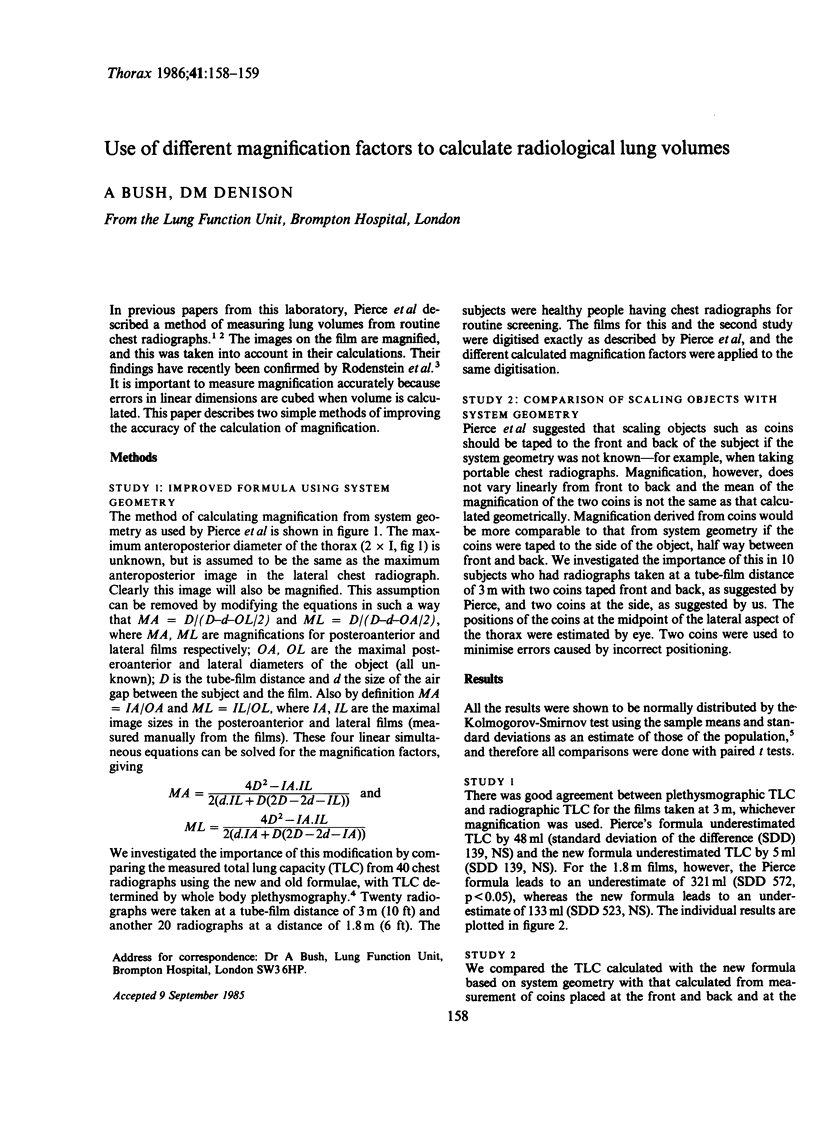Abstract
In previous papers from this laboratory, Pierce et al described a method of measuring lung volumes from routine chest radiographs. The images on the film are magnified, and this was taken into account in their calculations. Their findings have recently been confirmed by Rodenstein et al. It is important to measure magnification accurately because errors in linear dimensions are cubed when volume is calculated. This paper describes two simple methods of improving the accuracy of the calculation of magnification.
Full text
PDF

Selected References
These references are in PubMed. This may not be the complete list of references from this article.
- DUBOIS A. B., BOTELHO S. Y., BEDELL G. N., MARSHALL R., COMROE J. H., Jr A rapid plethysmographic method for measuring thoracic gas volume: a comparison with a nitrogen washout method for measuring functional residual capacity in normal subjects. J Clin Invest. 1956 Mar;35(3):322–326. doi: 10.1172/JCI103281. [DOI] [PMC free article] [PubMed] [Google Scholar]
- Pierce R. J., Brown D. J., Denison D. M. Radiographic, scintigraphic, and gas-dilution estimates of individual lung and lobar volumes in man. Thorax. 1980 Oct;35(10):773–780. doi: 10.1136/thx.35.10.773. [DOI] [PMC free article] [PubMed] [Google Scholar]
- Pierce R. J., Brown D. J., Holmes M., Cumming G., Denison D. M. Estimation of lung volumes from chest radiographs using shape information. Thorax. 1979 Dec;34(6):726–734. doi: 10.1136/thx.34.6.726. [DOI] [PMC free article] [PubMed] [Google Scholar]


